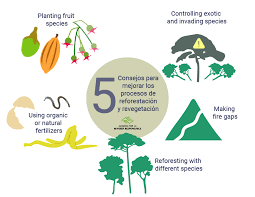The Importance of Environmental Stability
Environmental stability is crucial for the well-being of our planet and all living organisms that call it home. It refers to the balance and resilience of ecosystems, ensuring that they can continue to provide essential services such as clean air, water, and food.
One key aspect of environmental stability is biodiversity. A diverse range of species helps ecosystems withstand environmental changes and ensures their long-term survival. When biodiversity is threatened, it can lead to imbalances that disrupt the delicate harmony of nature.
Climate change poses a significant threat to environmental stability. Rising temperatures, extreme weather events, and sea-level rise are just some of the consequences of global warming. These changes can have far-reaching effects on ecosystems, leading to habitat loss, species extinction, and disruptions in natural cycles.
Protecting our environment is not just a matter of preserving natural beauty; it is essential for our own survival. Healthy ecosystems provide us with vital resources such as food, medicine, and raw materials. By maintaining environmental stability, we can ensure a sustainable future for generations to come.
Individual actions can make a difference in promoting environmental stability. Conserving energy, reducing waste, supporting sustainable practices, and advocating for policies that protect the environment are all ways we can contribute to a healthier planet.
In conclusion, environmental stability is a fundamental pillar of a thriving planet. By working together to preserve biodiversity, combat climate change, and promote sustainability, we can safeguard the health and prosperity of both nature and humanity.
Understanding Environmental Stability: Key Concepts and Questions
- How is environmental stability maintained?
- What is a stable environment?
- What is the meaning of ecological stability?
- What is an example of environmental stability?
- What are the factors of environmental stability?
- Why is stability important in environment?
How is environmental stability maintained?
Maintaining environmental stability requires a concerted effort across various levels of society. It involves implementing sustainable practices that reduce our impact on the environment, such as conserving resources, reducing pollution, and protecting biodiversity. Effective environmental policies and regulations play a crucial role in ensuring that industries and individuals adhere to standards that promote sustainability. Education and awareness also play a key role in fostering a culture of environmental responsibility, empowering individuals to make informed choices that benefit the planet. Collaboration between governments, businesses, communities, and individuals is essential for achieving long-term environmental stability and safeguarding the health of our planet for future generations.
What is a stable environment?
A stable environment refers to a state where ecosystems are in balance, able to withstand natural fluctuations and human impacts without significant disruptions. In a stable environment, biodiversity thrives, natural resources are replenished, and ecological processes function harmoniously. It is a condition where the delicate interplay between living organisms and their surroundings remains intact, ensuring the resilience and sustainability of the ecosystem. Maintaining a stable environment is crucial for the well-being of all life forms on Earth, as it provides essential services such as clean air, water, and fertile soil. By understanding and preserving the factors that contribute to environmental stability, we can work towards creating a healthier planet for current and future generations.
What is the meaning of ecological stability?
Ecological stability refers to the ability of an ecosystem to maintain its structure and function over time, despite external disturbances or changes. It encompasses the resilience and balance of natural systems, ensuring that they can adapt to environmental fluctuations while continuing to provide essential services. Ecological stability is crucial for supporting biodiversity, regulating climate, and sustaining life on Earth. By preserving the health and integrity of ecosystems, we can promote ecological stability and safeguard the well-being of our planet for future generations.
What is an example of environmental stability?
An example of environmental stability can be seen in a well-balanced coral reef ecosystem. Coral reefs are incredibly diverse and complex ecosystems that support a wide variety of marine life. When the reef is healthy and thriving, with a rich diversity of corals, fish, and other organisms, it indicates environmental stability. The presence of various species in the ecosystem, each playing a specific role in the food chain and contributing to the overall health of the reef, demonstrates a harmonious balance within the environment. Monitoring and preserving coral reefs serve as a prime example of striving towards environmental stability for the benefit of both marine life and human communities that rely on these ecosystems for sustenance and economic activities.
What are the factors of environmental stability?
Environmental stability relies on a delicate balance of various factors that contribute to the resilience and health of ecosystems. Biodiversity plays a crucial role in maintaining environmental stability, as a diverse range of species ensures ecosystems can adapt to changes and recover from disturbances. Climate patterns, including temperature, precipitation, and weather events, also influence environmental stability by shaping the conditions in which organisms live. Human activities such as pollution, deforestation, and overexploitation of natural resources can disrupt this balance, posing significant threats to environmental stability. Sustainable practices, conservation efforts, and responsible management of resources are essential factors in safeguarding the stability of our environment for future generations.
Why is stability important in environment?
Stability in the environment is crucial for the functioning and survival of ecosystems. It ensures that natural systems can withstand external pressures and maintain a balance that supports life. Environmental stability promotes biodiversity, which in turn enhances ecosystem resilience and productivity. Without stability, ecosystems are vulnerable to disruptions that can have cascading effects on species, habitats, and overall ecosystem health. By preserving environmental stability, we safeguard the essential services that nature provides, such as clean air, water, and food, ultimately benefiting both the environment and all living beings that depend on it for their well-being.

